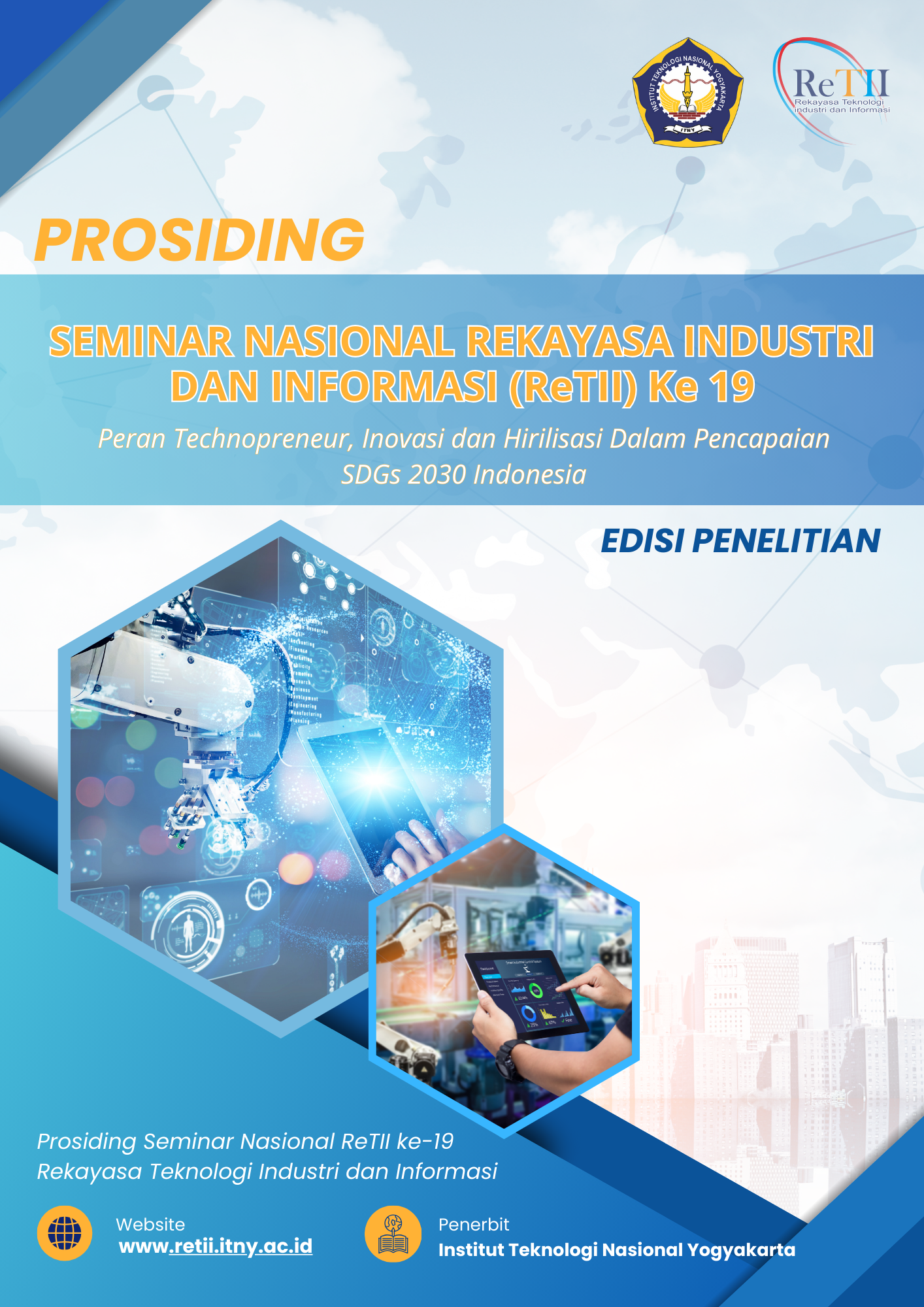EVOLUSI FASADE ADAPTIF RUMAH MODULAR
Kata Kunci:
Modular House, Building Adaptation, Building Facade, Technology DevelopmentAbstrak
Technological developments often affect the way residential buildings adapt to the environment. This is reflected in the appearance of building facades. This article presents a comparison of the development of modular houses in adapting to the environment along with technological developments. The focus of the study is more on the appearance of building facades. The analysis was carried out using a qualitative descriptive approach. The focus of the study is: (1) the development of modular houses before the industrialization era, (2) the development of modular houses before the mass industry era, (3) the development of modular houses in the digital technology era. Data collection was obtained from secondary data in the form of articles, books, seminar papers. Case studies through several case samples (case multiple) to provide examples of practice. The results of the study found that adaptive modular houses have been developed both in traditional architecture, mass industry era architecture, and the digital technology era. Traditional architectural modular houses in adapting to the environment are more static. Digital technology provides opportunities for the development of modular houses and their elements that are more dynamic (flexible), complex and integrated.
Referensi
Attia, S., Lioure, R., & Declaude, Q. (2020). Future trends and main concepts of adaptive facade systems. Energy Science & Engineering, March, 1–18. https://doi.org/10.1002/ese3.725
Ayu, G., Suartika, M., & Nichols, J. (2019). Reframing the Vernacular: Politics, Semiotics, and Representation. Springer.
Carlborg, P., & Kindström, D. (2014). Service process modularization and modular strategies. Journal of Business & Industrial Marketing, 29(4), 313–323. https://doi.org/10.1108/JBIM-08-2013-0170
Corbusier, L. (2019). Le Corbusier and the creative use of mathematics. BJHS, 31, 185–215.
Creswell, J. (2014). Research Design: Qualitative, Quantitative and Mixed Methods Approaches (4th ed.). SAGE.
Cropley, D., & Cropley, A. (2008). Elements of a Universal Aesthetic of Creativity. Psychology of Aestetics, Creativity and Art, 2(3), 155–161. https://doi.org/10.1037/1931-3896.2.3.155
Cucuzzella, C., Rahimi, N., & Soulikias, A. (2022). The Evolution of the Architectural Façade since 1950: A Contemporary Categorization. Architecture, 3(1), 1–32. https://doi.org/10.3390/architecture3010001
Deng, L. (2020). Quantitative Evaluation of Visual Aesthetics of Human-Machine Interaction Interface Layout. 2020.
Doe, R. M. (2020). An open , integrated modular format : For flexible and intelligible architecture , engineering and construction design and production. International Journal of Architectural Computing, 00(0), 1–14. https://doi.org/10.1177/1478077120943795
Douglas, J. (2006). Building Adaptation (Second edi). Elsevier.
Feigh, K. M., Dorneich, C., Laboratories, H., & Valley, G. (n.d.). Toward a Characterization of Adaptive Systems : A Framework for Researchers and System Designers. https://doi.org/10.1177/0018720812443983
Gärtner, C., & Schön, O. (2016). Modularizing business models: between strategic flexibility and path dependence. Journal of Strategy and Management, 9(1), 39–57. https://doi.org/10.1108/JSMA-12-2014-0096
Indrawan, S. E. (2017). Digital Fabrication, Architectural and Material Techniques Iwamoto, Lisa. International Journal of Creative and Arts Studies, 3(1), 87–91. https://doi.org/10.24821/ijcas.v3i1.2074
Jutraž, A., & Moine, J. Le. (2016). Breaking out : New freedoms in urban ( re ) design work by adding immersive environments. https://doi.org/10.1177/1478077116638922
Lehman, M. L. (n.d.). Adaptive Sensory Environments. Routledge.
Matondang, A. E., Putri, A. L., & Wahyuni, D. A. (2021). Kajian Estetika Arsitektur Fasad Pada Rumah Tinggal Desa. ARCADE, 5(2), 198–205.
Mayfield, A. H. B. M., Beck, S. B. M., & Mayfield, M. (2015). What is a Smart Building ? Smart and Sustainable Built Environment, 3(2), 92–109. https://doi.org/10.1108/SASBE-01-2014-0003
Nie, J. (2022). Application of Traditional Architectural Decoration Elements in Modern Interior Design Based on 3D Virtual Imaging. 2022.
Ostrowska-wawryniuk, K. (2020). design of sustainable DIY-oriented houses. 2 International Journal of Architectural Computing, 00(0), 1–15. https://doi.org/10.1177/1478077120966496
Pasquale, J. Di, Ph, D., Innella, F., & Bai, Y. (2020). Structural Concept and Solution for Hybrid Modular Buildings with Removable Modules. J. Archit. Eng, 26(3), 1–12. https://doi.org/10.1061/(ASCE)AE.1943-5568.0000423
Russell, A. L. (2012). Modularity : An Interdisciplinary History of an Ordering Concept. Information & Culture, 47(3), 257–287. https://doi.org/10.7560/IC47301
Satwiko, P., Author, C., Pintar, B., & Modular, S. (2022). Sistem Teknologi Bangunan Dan Mode Adaptif Ditengah Perubahan Lingkungan Post Pandemi Covid-19. 1(2), 79–89. https://doi.org/10.24167/joda.v1i2.4304
Schmidt, R., & Austin, S. (2016). Adaptable Architecture: Theory and practice. Taylor & Francis Group,.
Science, E. (2020). Another way of living : The Prefabrication and modularity toward circularity in the architecture Another way of living : The Prefabrication and modularity toward circularity in the architecture. IOP Conf. Ser.: Earth Environ, 588 042048. https://doi.org/10.1088/1755-1315/588/4/042048
Smith, R. E. (2011). Prefab Architecture: A Guide to Modular Design and Construction. In John Wiley & Sons, Inc. http://books.google.com/books?hl=en&lr=&id=pOCliGMKpzUC&oi=fnd&pg=PT20&dq=PREFAB+ARCHITECTURE:+a+guide+to+modular+design+and+construction&ots=j0n5GteYZ6&sig=wUYE0qhNDvy5tN_r6P9WQe79p4U
Wassim Jabi. (2013). Parametric Design for Architecture. Laurence King.
Wilkinson, A. (2020). Local response in health emergencies : key considerations for addressing the COVID-19 pandemic in informal urban settlements. Environment & Urbanization, 00(0), 1–20. https://doi.org/10.1177/0956247820922843
Wilkinson, S. J. (n.d.). Sustainable Building Adaptation.
Worren, N., Moore, K., & Cardona, P. (2002). Modularity, strategic flexibility, and firm performance: A study of the home appliance industry. Strategic Management Journal, 23(12), 1123–1140. https://doi.org/10.1002/smj.276
Zhang, J., Li, F., & Zhang, X. (2021). Decoupling Strategy and Modular Design for Loosely Coupled Organizations. Discrete Dynamics in Nature and Society, 00(0).
##submission.downloads##
Diterbitkan
Cara Mengutip
Terbitan
Bagian
Lisensi
Prosiding ini memberikan akses terbuka langsung ke isinya dengan prinsip bahwa membuat penelitian tersedia secara gratis untuk publik mendukung pertukaran pengetahuan global yang lebih besar.
Semua artikel yang diterbitkan Open Access akan segera dan secara permanen gratis untuk dibaca dan diunduh semua orang.


